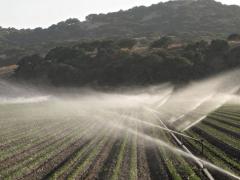Forms and subannual variability of nitrogen and phosphorus loading to global river networks over the 20th century
Nitrogen (N) and phosphorus (P) loading of global aquatic ecosystems has doubled during the 20th century and at the same time has the nutrient composition been disturbed by increasing proportions of inorganic forms from 30 to 43% for N and from 56 to 65% for P. This is one of the major causes of eutrophication worldwide.
Changing nutrient sources
The contribution of different sources, natural and anthropogenic, to total N and P loading to river networks has recently been estimated yearly using the Integrated Model to Assess the Global Environment - Global Nutrient Model (IMAGE-GNM). However, eutrophic events generally result from a combination of physicochemical conditions governed by hydrological dynamics and the availability of specific nutrient forms that vary at sub yearly timescales.
In the present study, we define for each nutrient source the composition: i) its speciation, and ii) its sub annual temporal pattern.
Thereby, we simulate the monthly loads of different N (ammonium, nitrate + nitrite, and organic N) and P forms (dissolved and particulate inorganic P, and organic P) to global river networks over the whole 20th century at a half-degree spatial resolution.
Global distortion of nutrient composition
Results indicate that, together with an increase in the delivery of all nutrient forms to global rivers, the proportion of inorganic forms in total N and P inputs has risen from 30 to 43% and from 56 to 65%, respectively. The high loads originating from fertilized agricultural lands and the increasing proportion of sewage inputs have led to a greater proportion of DIN forms (ammonium and nitrate), that are usually more bioavailable. Soil loss from agricultural lands, which delivers large amounts of particle-bound inorganic P to surface freshwaters, has become the dominant P source, which is likely to lead to an increased accumulation of legacy P in slow flowing areas (e.g., lakes and reservoirs). While the TN:TP ratio of the loads has remained quite stable, the DIN:DIP molar ratio, which is likely to affect algal development the most, has increased from 18 to 27 globally.
Human activities have also affected the timing of nutrient delivery to surface freshwaters. Increasing wastewater emissions in growing urban areas induces constant local pressure on the quality of aquatic systems by delivering generally highly bioavailable nutrient forms, even in periods of low runoff.
Authors
Specifications
- Publication title
- Forms and subannual variability of nitrogen and phosphorus loading to global river networks over the 20th century
- Publication date
- 9 February 2018
- Publication type
- Publication
- Magazine
- Global and Planetary Change
- Product number
- 3249




